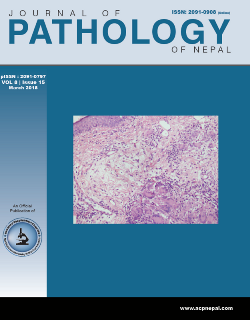Correlation between histopathological and endoscopic findings of non-malignant gastrointestinal lesions: an experience of a tertiary care teaching hospital from Northern India
DOI:
https://doi.org/10.3126/jpn.v8i1.19456Keywords:
Endoscopy, Gastrointestinal biopsies, Histopathology, India, Non-malignantAbstract
Background: Gastrointestinal tract endoscopy along with biopsy is an established procedure for investigating a wide range of gastrointestinal conditions especially inflammatory and malignant diseases. The aim was to study and categorizing the morphological lesions of non-malignant origin at various sites of gastrointestinal tract and to compare with its endoscopic findings.
Materials and Methods: This study was conducted on 280 benign GI biopsies received in the Department of Pathology of Sri Guru Ram Das Institute of Medical Sciences and Research, Amritsar, Punjab, India.
Results: Maximum cases (39%) were observed in the age group of 41-60 years. Male patients outnumbered the females (male to female ratio was 1.4:1). There were total 33 esophageal biopsies amongst which the most common lesion was non-specific esophagitis with least common being Barrett’s esophagus. Correlating the results of endoscopic and histopathological features of acute and chronic gastritis a positive predictive value of 80% with sensitivity of 44.4% was seen. Total 83 duodenal biopsies were analyzed with non-specific duodenitis being the most commonly diagnosed lesion followed by celiac disease. Correlation of endoscopic and histopathological findings in celiac disease revealed a sensitivity of 50% and positive predictive value of 42.86%. In both sigmoid colon and rectum, non-specific colitis was the commonest diagnosis followed by ulcerative colitis. Endoscopic findings were correlated with the histopathological features in ulcerative colitis, revealing a sensitivity of 57.14% along with the positive predictive value of 80%.
Conclusion: Histopathology remains the gold standard for diagnosing a case along with endoscopic findings and endoscopic findings alone cannot make the final diagnosis.
Downloads
Downloads
Published
How to Cite
Issue
Section
License
This license enables reusers to distribute, remix, adapt, and build upon the material in any medium or format, so long as attribution is given to the creator. The license allows for commercial use.




